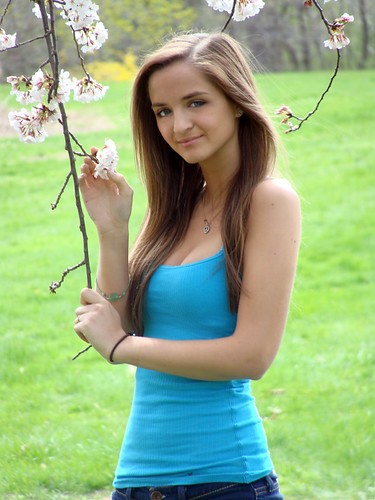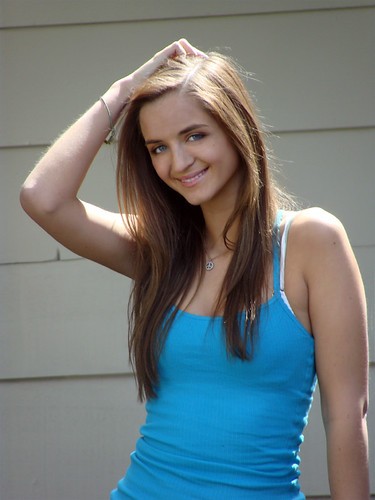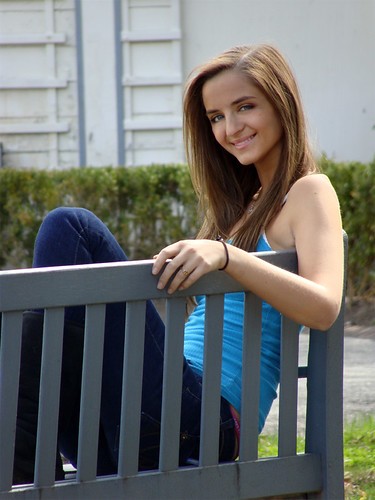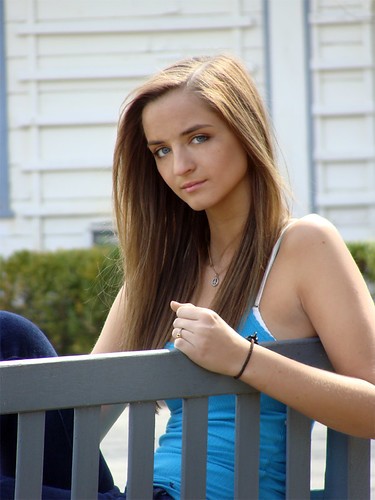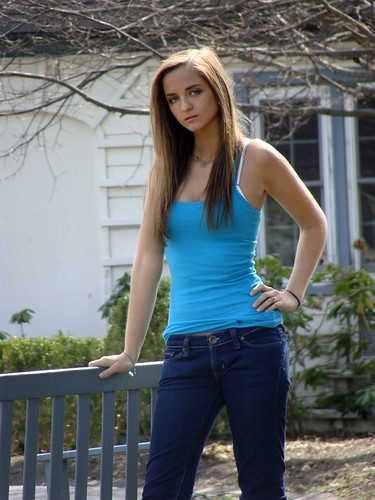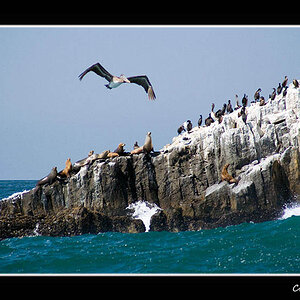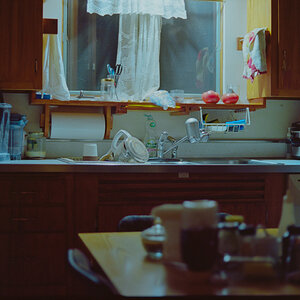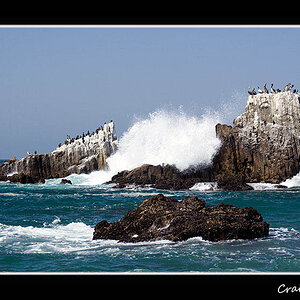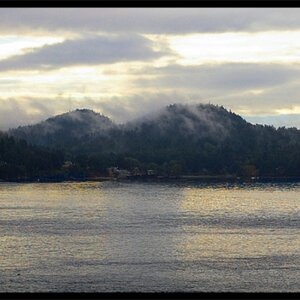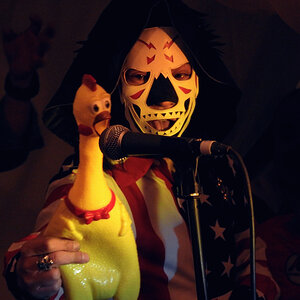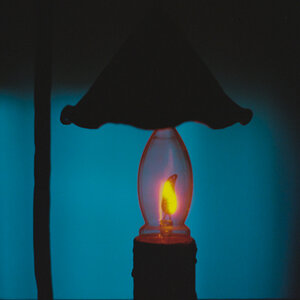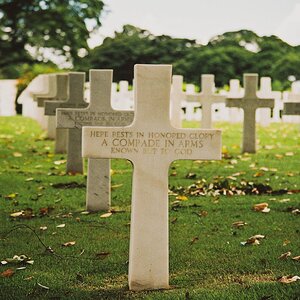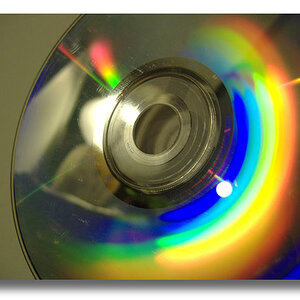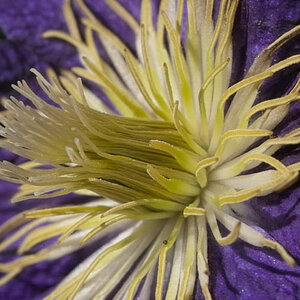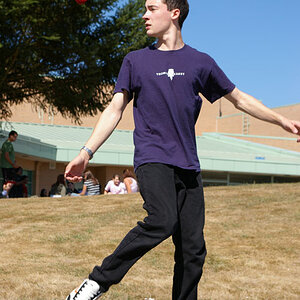Navigation
Install the app
How to install the app on iOS
Follow along with the video below to see how to install our site as a web app on your home screen.

Note: This feature currently requires accessing the site using the built-in Safari browser.
More options
You are using an out of date browser. It may not display this or other websites correctly.
You should upgrade or use an alternative browser.
You should upgrade or use an alternative browser.
Trying to get the best portraits I can..
- Thread starter Lsatblu
- Start date
Christie Photo
No longer a newbie, moving up!
- Joined
- Jan 7, 2005
- Messages
- 7,199
- Reaction score
- 148
- Location
- Kankakee, IL
- Website
- www.christiephoto.com
I doubt photoshop will achieve the affect you are looking for. The headshots you posted from other photographers are professionally lit, ...
And there it is. Proper lighting. Don't confuse this with adequate lighting, or proper exposure.
...which means multiple off camera flashes, softboxes, umbrellas, and wireless triggers, not to mention a quality lens.
Well... not necessarily. But if you want to create proper lighting as opposed to learning to recognise proper existing light (which requires some training), then yes... you'll need to acquire and learn to use lighting equipment.
-Pete
Christie Photo
No longer a newbie, moving up!
- Joined
- Jan 7, 2005
- Messages
- 7,199
- Reaction score
- 148
- Location
- Kankakee, IL
- Website
- www.christiephoto.com
Do you think the d80 with a manual strobe and one to two umbrellas would be sufficient on a outdoor sunny day?
I think it matters most whose hands they're in, the prevailing situation, and the desired outcome. It's not about equipment. It's about how the equipment is used.
There are no shortcuts. Learning first, excellence later.
Better... or more.... or different equipment is not the first concern.
-Pete
Lsatblu
TPF Noob!
- Joined
- Feb 13, 2009
- Messages
- 47
- Reaction score
- 0
- Can others edit my Photos
- Photos OK to edit
I think it matters most whose hands they're in, the prevailing situation, and the desired outcome. It's not about equipment. It's about how the equipment is used.
There are no shortcuts. Learning first, excellence later.
Better... or more.... or different equipment is not the first concern.
-Pete
I understand what you mean. But with this camera and after I read up a ton more on photography, will I eventually be able to achieve the look I am going for? Is that camera good enough with that lens? Thanks.
Christie Photo
No longer a newbie, moving up!
- Joined
- Jan 7, 2005
- Messages
- 7,199
- Reaction score
- 148
- Location
- Kankakee, IL
- Website
- www.christiephoto.com
...after I read up a ton more on photography, will I eventually be able to achieve the look I am going for?
Gee... who can say? Reading is a good start. Practical experience is essential.
Like any other training, some will finish near the top of the class, while some may never grasp a working understanding of the material.
You've set a goal. Now you're developing a plan to achieve the goal. Hopefully as you increase your understanding of and experience in portraiture, you'll be the best person to answer your question about the tools you'll choose to use.
I think of a camera as a device in between the lens and the sensor/film that controls the amount of light that passes between the two. Some are quite sophisticated, and some are quite simple. Following this reasoning, it's more important what lens you put in front of the camera and what sensor/film you put behind the camera than the actual camera itself.
But again, most important is how you control what's in front of the lens. It's all up to you. You choose the model, the setting, the wardrobe, propping and so on. And you control how all this is to be illuminated.
I'm sorry if this sounds vague, but I don't know how else your question can be answered. Photography poses two challenges: the technical and the artistic.
You're asking about some technical concerns... about what certain tools can allow you to achieve. The best answer I can offer is "yes." If you have a lens, a sensor (or film), and a way to control the light that passes between, you CAN achieve your goal. As for "will I eventually be able to achieve the look," I don't know. It depends on how you use these tools.
– Pete
Last edited:
anubis404
TPF Noob!
- Joined
- Apr 5, 2008
- Messages
- 955
- Reaction score
- 0
- Can others edit my Photos
- Photos OK to edit
Hi,
I have been thinking about this, and I really do like photography. I would like to be able to help my sister and take my own photos for future projects I will be working on. I know for my senior project I will want a good camera to take pictures with.
I looked up the Nikon D50 you listed but I don't see it for that price.
Nikon D50 - Google Product Search
Google has it for $589 and $831. It also has less MP than my current point and shoot. Is that the best camera you can recommend for me and what I am trying to accomplish?
Thanks. =)
The D50 is discontinued, and all the prices in google shopping are what they were years ago, and are far over what you can get it for used. In excellent condition used, you can easily get it for $250-300. Have you checked ebay and craigslist yet?
anubis404
TPF Noob!
- Joined
- Apr 5, 2008
- Messages
- 955
- Reaction score
- 0
- Can others edit my Photos
- Photos OK to edit
Besides the body, I would just need a 50mm F1.8 and a manual strobe? To take really well portraits? Would I need an umbrella if I am shooting outside? I would just carry it and set it up in a good spot to bounce the light onto my model, correct?
Or diffuse it. For portraits, a reflecing umbrella, a shoot through umbrella, or a softbox are required. You're also going to need wireless triggers, because the D50 doesn't have CLS. If you look hard, you could probably find a D70 for not much more than a D50, and the D70 does have CLS.
Most of those "cheaper" sites are bait and switch scams. Stick to trusted sites like BH, Cameta, Adorama, Ebay, etc.Edit: wouldn't it make sense to buy it from one of those sites for cheaper and then get the 50mm F1.8 lens for it? The one on ebay has a different lens I might not need.
As for the 50mm F1.8 vs kit lens, the 50mm far outclasses the plastic kit zooms. Their optical quality and speed will prove valuable for a portrait shoot. They can be had for around the same price as an 18-55, and its a good investment.
Well... not necessarily. But if you want to create proper lighting as opposed to learning to recognise proper existing light (which requires some training), then yes... you'll need to acquire and learn to use lighting equipment.
-Pete
I agree, however lighting equipment is much more versatile than the weather, which you usually have no control over.
Last edited:
Christie Photo
No longer a newbie, moving up!
- Joined
- Jan 7, 2005
- Messages
- 7,199
- Reaction score
- 148
- Location
- Kankakee, IL
- Website
- www.christiephoto.com
I had some more practice today..
I'm curious about what you are learning and how you've applied it all. Would you take any one of these photographs and critique yourself? Tell me why you've make as you did and what you feel you lack.
Thanks.
-Pete
Lsatblu
TPF Noob!
- Joined
- Feb 13, 2009
- Messages
- 47
- Reaction score
- 0
- Can others edit my Photos
- Photos OK to edit
I'm curious about what you are learning and how you've applied it all. Would you take any one of these photographs and critique yourself? Tell me why you've make as you did and what you feel you lack.
Thanks.
-Pete
Sure thing, I noticed from when I first started I was unaware of where the light was coming from. If you look at my first photos, I had the model in direct sunlight without anything reflecting the light or diffusing it. I feel with the latest photos I am learning where to position the model with taking the direction of light into consideration. Another thing I accomplished was depth of field. When I first started I did not understand how to use the settings on my camera and now I have taken what I learned into the classroom for school and photographed my art projects in a studio.
Overall I think my latest pictures look more professional, I could be wrong so please tell me otherwise if you spot something wrong with them. I know I still have a lot to learn and I plan on it. One thing I lack is the ability to hold the camera steady so I might invest in a tripod and some reflectors.
For my senior project I plan on having some fashion like portraits taken so I want to start to dabble into indoor photography as well as improve on my outdoor pictures.
Right now with the latest pictures I think I am lacking another light source like a strobe but that may just be my personal opinion.
Hope this helps clear everything up.
What do you or anyone else think about my latest shots?
snyper1982
TPF Noob!
- Joined
- Apr 15, 2009
- Messages
- 2
- Reaction score
- 0
I will try vertical pictures on Saturday.
Would someone be so kind to guide me through creating a depth of field? I tried the virtual camera site that was posted above and that made sense. I was able to focus on those examples. But I can not figure it out on my camera...
I want my model to be in focus while the background is not.
On the screen I have a number that goes from 2000 to 30"..
Then there is the number F3.5 to 8 when zoomed out and when zoomed far in it goes to F10.
Also in my settings I can set the ISO to auto or 100 to 3200.
The focus can be changed from multi AF, Center AF, Spot AF and 0.5 to 7.0 and also unlimited.
I tried reading the manual but it doesn't explain it well. I would assume F3.5 would give me a good depth of field? And then I play around with the other number (2000 to 30") till I get a good contrast, but what about the ISO and focus?
I am confused because it seems I will have to manual go into the settings every time I want to take a different picture to adjust the focus and ISO...those are not done on screen easily like the shutter and apature are.
Thanks.
I am also fairly new to photography, but from my reading so far I can answer a couple things. The F numbers are your aperture. If your camera has an aperuture priority mode, you should be able to get the shot you want with the blurry backround by selecting the smallest f number you can, and the camera shoould take care of the rest of the exposre setings for you.
ISO, always leave it at ISO 100 if at all possible. Anything higher will start introduscing noise into the picture. Depending on your camera of course.
The 2000 number sounds like shutter speed. But it is usually in fracional form, like 1/2000 all the way up to like 30 seconds.
The AF(autofous) mode, just cahnges the areas where it looks to focus. At least I believe that is what it does. I have never really played around with thos settings much though... I think I use multi though on mine.
I use a Panasonic FZ8. So we hav a lot of similar features.
As for RAW. It is useful for work on post production. If you don't do post work, RAW isn't all that useul.
Christie Photo
No longer a newbie, moving up!
- Joined
- Jan 7, 2005
- Messages
- 7,199
- Reaction score
- 148
- Location
- Kankakee, IL
- Website
- www.christiephoto.com
I noticed from when I first started I was unaware of where the light was coming from. ...Overall I think my latest pictures look more professional, ...
Alright... let's look at the first image in the last series you've posted. I've place it side-by-side with one from your first.
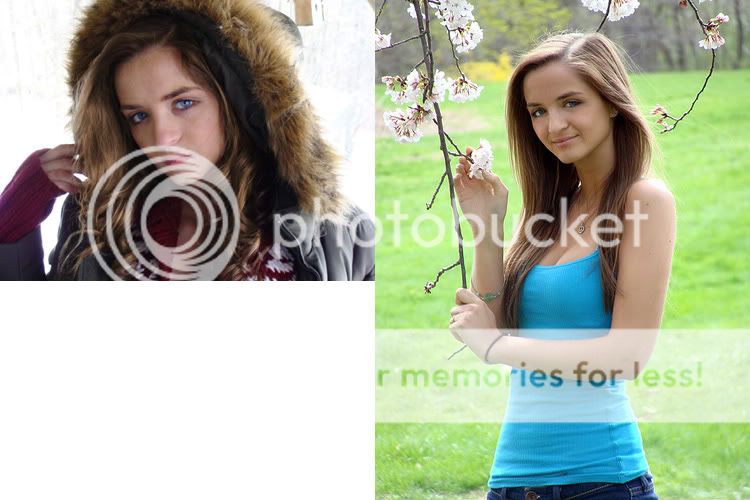
I ask you to do the same exercise that I suggested then: Look at these photos and slowly begin to squint your eyes, much like when you stop down your lens aperture. Notice in your earlier photo, you see the face is well lighted. The tones in her face, aside from the background, are the brightest area in the portrait. On the second, notice that the face is in shadow and is the deepest area of the image. Can you see it?
Now, granted, it's not deep shadow and you have good detail in that area of the image. But that's what I mean when I say not to confuse adequate lighting with proper lighting. I would say you have good fill lighting on her face, but no main light at all. Compare the eyes in the two. See the color... see that catch lights in the first? It's just not happening in the second.
The pose could use a bit of work too. I like the way you have the wrists positioned with a slight backward bend. The positioning of the hands could be better. Seeing into her right palm with it facing flat at the camera makes it look larger than if you had rotated it clockwise, showing the side of her hand. The fingers of the left hand is good, but would have been just a bit better if you had her relax the index finger a bit, letting it straighten slightly. Her left forearm is creating a hard, horizontal line, "cutting" her in half. Cropping the image just below the elbow will help with this.
I hope all this makes sense. It's very hard for me to express all of this here. I wish we could just go out together with a model so I could show you. Oh well.
I hope this helps.
-Pete
nsupanda
TPF Noob!
- Joined
- Apr 20, 2009
- Messages
- 73
- Reaction score
- 0
- Location
- Eastern Oklahoma
- Can others edit my Photos
- Photos OK to edit
I'm no professional, or anywhere near it, but I can tell a HUGE difference in the quality of the photographs. You're doing really well!
ANDS!
No longer a newbie, moving up!
- Joined
- Nov 14, 2006
- Messages
- 2,178
- Reaction score
- 3
- Location
- Downtown
- Can others edit my Photos
- Photos OK to edit
Some of the advice in this thread makes my head hurt.
You do NOT need off-camera lighting to to do portraiture work. A couple reflectors and scenes with CHARACTER go a long way.
The shadows on that young ladies face, barring any OBVIOUS patterns (such as if the gradient from light to dark was SUPER OBVIOUS) is fine. Light is already coming from all directions bouncing in and filling shadows in nicely. He/she could perhaps grab a makeshift reflected (put some aluminum foil of a piece of cardboard - viola!) source and shove it under the young ladies feet, but barring that, these are some pleasing shadows. What I WOULD work on is restricting some of that light so that its NOT blowing out the skins tones (the shoulder in the last photos), while still keeping the rest of the young lady evenly/softly lit. The sun is a big ass light source; it really isn't going to produce HARD shadows, so I'm not sure why we're giving him/her advice on how to try and overcome that. Yes you can control where its landing, but so long as its not a ridiculously bright date, getting your sister out before the noonday sun comes willg ive you some primetime shooting.
Also, back to character. If the goal is to get your foot in the door - you dont want to emulate what established models can get away with. You wanna go with your best. Get her out of the cheesy burka and jeans/tank top. If you're going to shoot her near foilage, but her in an frilly white/yellow dress (whatever those are - you know what I mean) . .add some character to her hair, and maybe stick here in an area with some atmosphere to it. In front of a wall on a building (with no character of its own) doesn't count. Now if there are farms or the like in your area. . .go there, use the environment to your advantage, because right now its not really hindering, but it also isn't helping.
You do NOT need off-camera lighting to to do portraiture work. A couple reflectors and scenes with CHARACTER go a long way.
The shadows on that young ladies face, barring any OBVIOUS patterns (such as if the gradient from light to dark was SUPER OBVIOUS) is fine. Light is already coming from all directions bouncing in and filling shadows in nicely. He/she could perhaps grab a makeshift reflected (put some aluminum foil of a piece of cardboard - viola!) source and shove it under the young ladies feet, but barring that, these are some pleasing shadows. What I WOULD work on is restricting some of that light so that its NOT blowing out the skins tones (the shoulder in the last photos), while still keeping the rest of the young lady evenly/softly lit. The sun is a big ass light source; it really isn't going to produce HARD shadows, so I'm not sure why we're giving him/her advice on how to try and overcome that. Yes you can control where its landing, but so long as its not a ridiculously bright date, getting your sister out before the noonday sun comes willg ive you some primetime shooting.
Also, back to character. If the goal is to get your foot in the door - you dont want to emulate what established models can get away with. You wanna go with your best. Get her out of the cheesy burka and jeans/tank top. If you're going to shoot her near foilage, but her in an frilly white/yellow dress (whatever those are - you know what I mean) . .add some character to her hair, and maybe stick here in an area with some atmosphere to it. In front of a wall on a building (with no character of its own) doesn't count. Now if there are farms or the like in your area. . .go there, use the environment to your advantage, because right now its not really hindering, but it also isn't helping.
Similar threads
- Replies
- 10
- Views
- 425
- Replies
- 9
- Views
- 354

